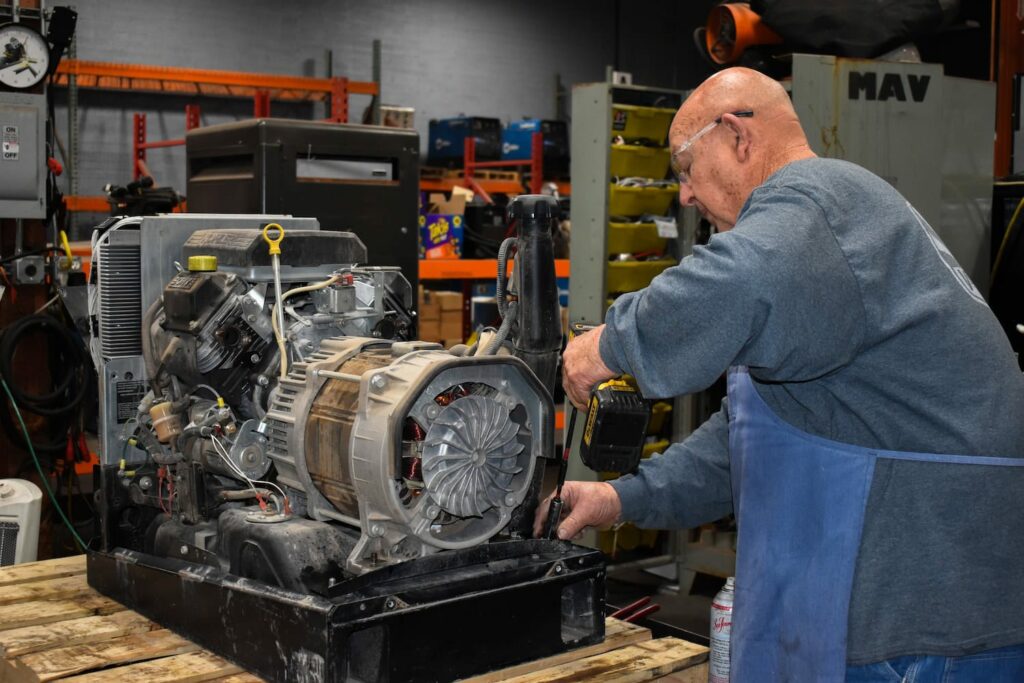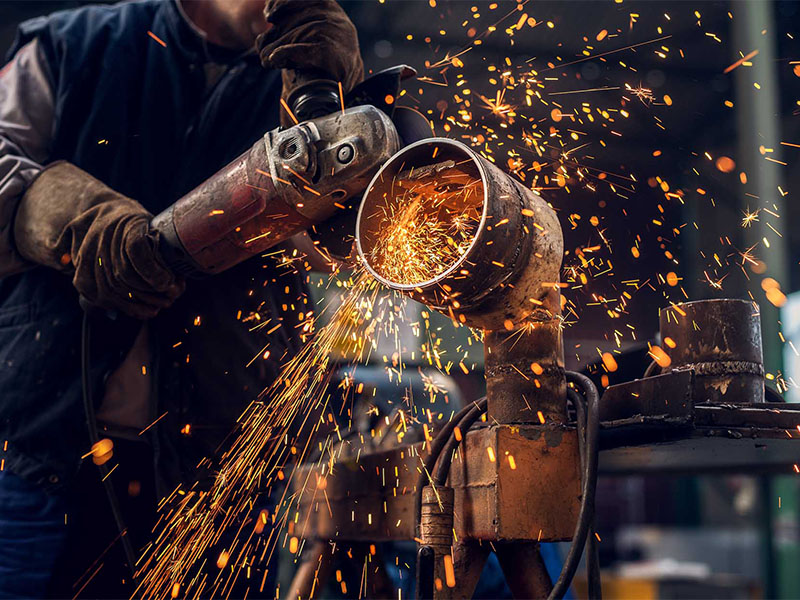Typical Welding Repair Issues and Exactly How to Address Them Effectively
Welding repair work often experience a range of issues that can endanger the honesty of the end product. Usual problems include poor infiltration, porosity, and misalignment, among others. Each problem presents special obstacles that need specific approaches for resolution. Understanding these concerns is important for welders intending to improve their abilities and outcomes. This conversation will certainly check out these usual welding repair service problems and reliable approaches to address them.
Poor Penetration
Poor penetration takes place when the weld steel fails to fully fuse with the base material, resulting in weak joints and potential structural failings. This issue often originates from insufficient warm input, incorrect electrode angle, or improper welding speed. Welders might encounter poor penetration as a result of a mistake of the necessary specifications for a details product density or type. Furthermore, contamination on the base product's surface can impede effective bonding, exacerbating the trouble. To deal with insufficient infiltration, welders must ensure appropriate setups on their tools and keep a clean job surface. Normal inspection of welds is suggested to identify any type of shortages early, permitting for prompt modifications and the prevention of compromised architectural stability in bonded settings up.
Porosity
Porosity is a common issue in bonded joints that materializes as tiny gas bubbles entraped within the weld metal. This issue can jeopardize the stability of the weld, resulting in decreased strength and prospective failing under anxiety. Montana Mobile Welding and Repair. Porosity typically occurs from contamination, wetness, or improper welding methods, which enable gases to get away right into the molten weld swimming pool. To attend to porosity, welders ought to guarantee appropriate surface preparation, preserve a clean workplace, and utilize suitable welding parameters. Furthermore, choosing the appropriate filler material and shielding gas can minimize gas entrapment. Regular assessment and screening of welds can aid identify porosity early, assuring timely restorative activities are taken, consequently protecting the high quality and dependability of the welded structure
Imbalance
Imbalance in welding can arise from numerous elements, including incorrect arrangement and thermal development. Recognizing the origin is crucial for reliable resolution. Several modification methods are readily available to straighten components and assure architectural stability.
Sources of Misalignment
Welding misalignment commonly comes from a variety of underlying problems that can jeopardize structural honesty. One primary reason is incorrect fit-up of parts before welding, which can cause voids and uneven surfaces. Variations in thermal expansion throughout the welding process can additionally lead to distortion, especially if the materials being signed up with have various coefficients of growth. Additionally, insufficient securing and fixturing may fail to hold elements safely in place, causing activity throughout welding. Badly conserved devices, consisting of welding makers and devices, might present inconsistencies in the weld grain, further adding to misalignment. Operator mistake, stemming from insufficient training or experience, can likewise play a substantial function in producing misaligned welds.

Adjustment Strategies Readily Available
Dealing with misalignment effectively requires a combination of corrective techniques customized to the particular problems at hand. One common technique is using jigs or fixtures to hold elements in the appropriate placement during welding, guaranteeing constant positioning. Additionally, pre-heating the products can help in reducing distortion and enhance fit-up. For substantial imbalance, mechanical adjustment techniques, such as making use of hydraulic jacks or clamps, can be used to correct the position prior to welding. Post-weld warm treatment might likewise be required to soothe stresses triggered by misalignment. Finally, mindful inspection and adjustment during the setup phase can protect against imbalance issues from coming to be significant troubles, advertising a smoother welding procedure and boosting general structural stability.
Distortion
Distortion is a common difficulty in welding that can emerge from various elements, including uneven cooling and heating. Understanding the reasons for distortion is crucial for carrying out efficient prevention techniques. Resolving this problem not only enhances architectural honesty but likewise improves the general quality of the weld.
Causes of Distortion
When subjected to the intense warm of welding, materials commonly undergo changes that can result in distortion. This phenomenon mainly emerges from thermal development and tightening during the welding procedure. As the weld location warms up, the product broadens; upon cooling, it contracts, which can create inner anxieties. On top of that, unequal home heating across a work surface can aggravate these anxieties, resulting in warping or flexing. The kind of material likewise plays a considerable role; metals with varying thermal conductivity and coefficients of expansion might respond in a different way, resulting in unforeseeable distortions. Furthermore, bad joint design and inadequate fixturing can contribute to imbalance throughout welding, increasing the likelihood of distortion. Comprehending these reasons is crucial for reliable welding repair service and avoidance methods.
Prevention Techniques
Reliable prevention strategies for distortion throughout welding focus on managing warm input and making certain correct joint layout. Keeping a constant heat input aids to decrease thermal expansion and contraction, which can result in distortion. Making use of strategies such as pre-heating the workpiece can additionally minimize the temperature level gradient, promoting consistent home heating. In addition, selecting proper joint styles, such as T-joints or lap joints, can enhance stability and minimize stress and anxiety focus. Carrying out appropriate fixturing to protect the workpieces in location additionally aids in keeping placement throughout the welding process. Lastly, staggered welding sequences can disperse heat a lot more evenly, protecting against localized distortion. By using these techniques, welders can significantly reduce the possibility of distortion and boost the general top quality of their welds.
Breaking
Splitting is an usual concern run into in welding repairs, usually arising from different factors such as incorrect air conditioning rates, product choice, or poor joint prep work. The occurrence of splits can substantially compromise the honesty of the weld, leading to potential failures throughout operation. To resolve this problem, welders must first examine the origin, ensuring that products are suitable and properly chosen for the certain application. In addition, controlling the cooling rate throughout the welding process is crucial; rapid cooling can cause anxiety and cause fracturing. Correct joint design and preparation also add to decreasing the danger. Applying these approaches can improve weld top quality and resilience, ultimately reducing the probability of splitting in completed weldments.

Insufficient Blend
A considerable issue in welding fixings is incomplete blend, which occurs when the weld steel does not adequately bond with the base product or previous weld passes - Montana Mobile Welding and Repair Welding. This flaw can lead to weaknesses in the joint, possibly jeopardizing the stability of the bonded framework. Elements adding to insufficient combination consist of not enough warm input, improper welding method, and contamination of the surfaces being joined. To address this concern properly, welders ought to ensure appropriate pre-weld cleansing and surface area prep Visit Your URL work, in addition to official statement adjust their welding specifications to achieve adequate penetration and combination. Routine inspection during the welding procedure can likewise aid identify incomplete combination early, permitting for prompt restorative actions to improve the total high quality of the weld
Overheating
While welding repair services can enhance structural integrity, overheating presents a significant challenge that can lead to material deterioration. Extreme heat during welding can alter the mechanical residential or commercial properties of metals, causing lowered toughness, boosted brittleness, and bending. This phenomenon is specifically critical in high-stress applications where architectural integrity is paramount. Determining getting too hot can entail aesthetic examinations for discoloration or distortion, along with keeping an eye on temperature level throughout the welding procedure. To alleviate the risks connected with overheating, welders should use suitable methods, such as controlling warm input, readjusting traveling speed, and making use of ideal filler products. Additionally, implementing pre- and post-weld heat treatments can aid recover product residential or commercial properties and enhance the total top quality of the repair service, making certain long-term efficiency and security.
Regularly Asked Concerns
What Are the Typical Signs of a Welding Issue?

Exactly How Can I Check My Welds for Quality?
To examine welds for high quality, one can utilize visual assessments, ultrasonic testing, and radiographic techniques. Each strategy assures architectural stability, determines issues, and validates adherence to specified requirements, eventually boosting the dependability of the bonded joints.
What Security Preventative Measures Should I Take While Welding?
When welding, one should prioritize security by wearing suitable individual safety tools, making sure appropriate air flow, safeguarding combustible products away, preserving a tidy work area, and recognizing surroundings to stop mishaps and injuries.
Can I Repair a Weld Without Redesigning the Entire Joint?
Repairing a weld without redoing the whole joint is possible, depending upon the damage (Fabrication). Methods such as grinding, including filler material, or making use of a welding process can properly attend to details defects while maintaining the surrounding framework
What Tools Are Vital for Efficient Welding Services?
Necessary tools for reliable welding fixings consist of a welding maker, cord Full Article brush, mill, protective gear, clamps, and filler products. Each device plays a crucial role in making sure top quality and safety and security during the repair work process. Porosity commonly occurs from contamination, wetness, or improper welding strategies, which permit gases to escape right into the liquified weld pool. Improperly conserved tools, consisting of welding equipments and tools, might present disparities in the weld bead, additional adding to misalignment. When subjected to the intense heat of welding, materials typically undergo changes that can lead to distortion. Cracking is an usual issue run into in welding repairs, typically resulting from various factors such as improper air conditioning rates, material option, or insufficient joint preparation. A significant concern in welding fixings is incomplete fusion, which happens when the weld metal does not sufficiently bond with the base product or previous weld passes.